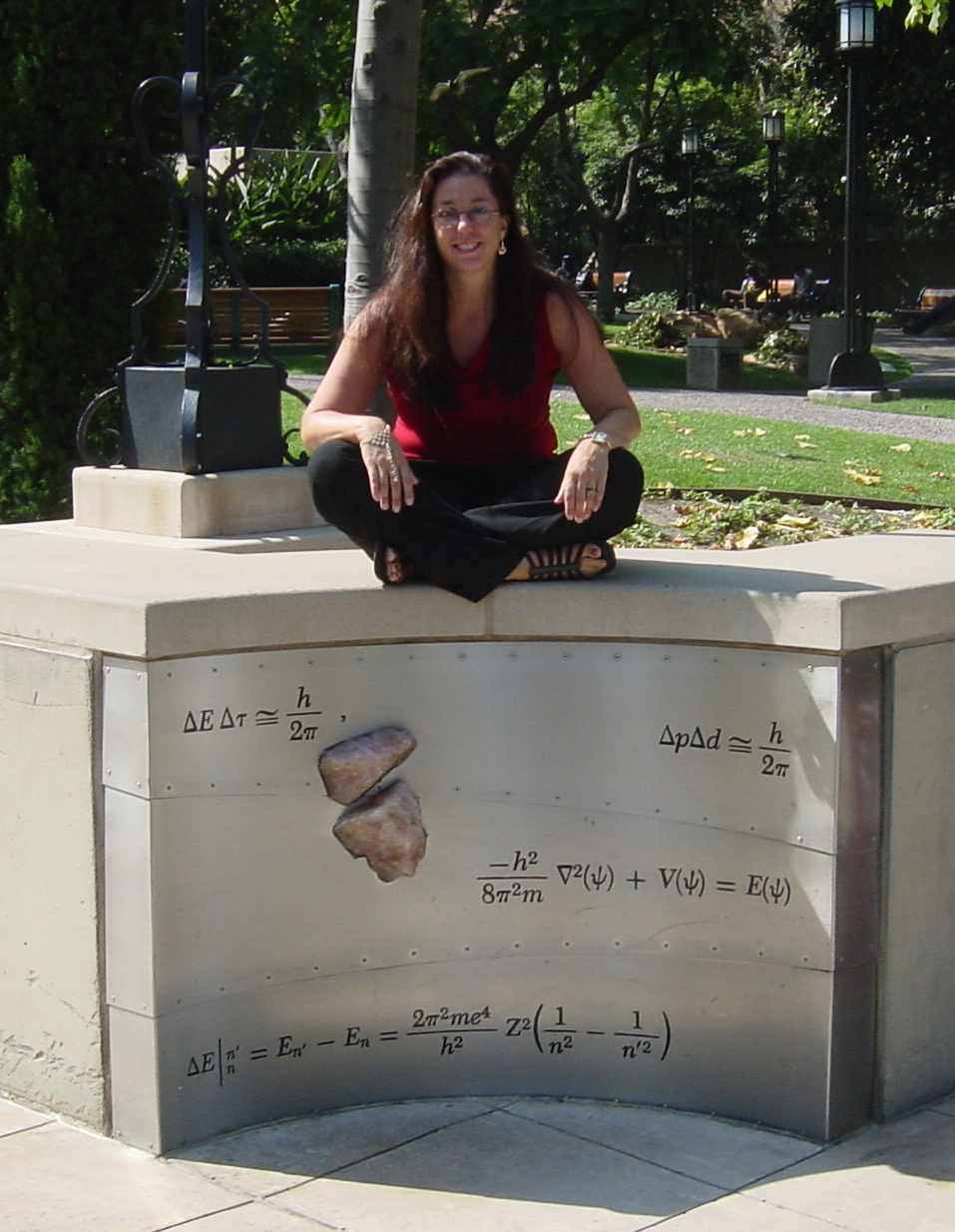
Hi, I’m Jessica.
I’m a physics professor at Saint Mary’s College of California. My professional work is focused on students and teaching. I’m interested in the best ways to teach physics. I’ve been experimenting with different ideas: flipped classrooms, small group work, different tricks that might help the students learn.
Let me tell you how I got here.
The first physics class I ever took (in high school) didn’t interest me much. It seemed like it was focused on memorizing equations, and very little on what was happening or why that equation should work.
I didn’t take another physics class till I was a sophomore in college at DePauw University. At first, I liked it and felt a sense of satisfaction from solving problems; it felt a bit like solving puzzles, something I had very much liked to do as a kid. So that was fun. I began to appreciate that it wasn’t about memorization. That in fact, you could get so much by remembering very little. I really liked that. I had friends in upper division classes, and they talked me into going to lectures that were way too advanced for me, but it was at one of those that I first heard about Bell’s Theorem, and I was hooked.
I still wasn’t convinced I could make a career of physics, but I kept taking math and physics classes, and I kept liking them. Then in the summer before my senior year, I had a chance to do summer research at the Stanford Linear Accelerator Center. That decided my career, or at least, that I would go to grad school in physics. It was also when I fell in love with California, and San Francisco in particular.
I went to grad school at the University of California, Davis. I started out in the high energy group; particle physics was definitely my first love. I shifted focus from high energy to nuclear partly because I didn’t want to be part of such large collaborations, but then I ended up doing high energy nuclear, and I finished my PhD thesis on the EOS experiment, an experimental collaboration of 40 physicists. Even that seemed too big to me.
I finished my PhD in 1995, and my first teaching job was at Lawrence University in Wisconsin. Lawrence is a great school, and I enjoyed my time there--except for the cold!
After one year in Wisconsin, I moved back to California, to Saint Mary’s College of California. I have been here ever since. A friend of mine from grad school, Chris Ray, started at SMC at the same time I did. We spent a lot of time revamping the intro physics labs, and my very first classes at SMC were introductory physics and electronics.
Although teaching was my primary focus, I was still doing research on heavy ion physics (high energy nuclear), and I was still involved with the EOS Collaboration, and I was delighted that Saint Mary’s was so close to Lawrence Berkeley National Lab, where the EOS experiment had taken place. Over time, the focus shifted to higher energy regimes, as it often does. The Time Projection Chamber of the EOS experiment moved to Brookhaven National Lab and became a detector in the E895 Experiment, which I also joined.
In the years I’ve been teaching, I have taught every undergraduate physics class that we offer (not the Astronomy or Astrophysics courses, but otherwise all) and all four Collegiate Seminar courses. (Old school, not the new ones yet.) I love being able to lead Seminar. It is one of the many reasons I love being at Saint Mary’s.
I am also currently the director of the Clare Boothe Luce Scholars program at Saint Mary’s. We are awarding $300k to eight students over three years for full tuition awards for each of their junior and senior years. During the process of writing the proposal, I became very interested in the question: why are physics, CS and Engineering still so male dominated? (And by that I do mean across the US, not just at SMC.) Years ago, so were math and chem and longer ago, even biology. But now those are nearly equal in terms of men and women, yet physics, CS and engineering lag behind. Why?
Another reason I love being at SMC: the people in my department. I feel incredibly lucky to be working with such amazing people. Come check out physics at Saint Mary’s. It’s pretty great.